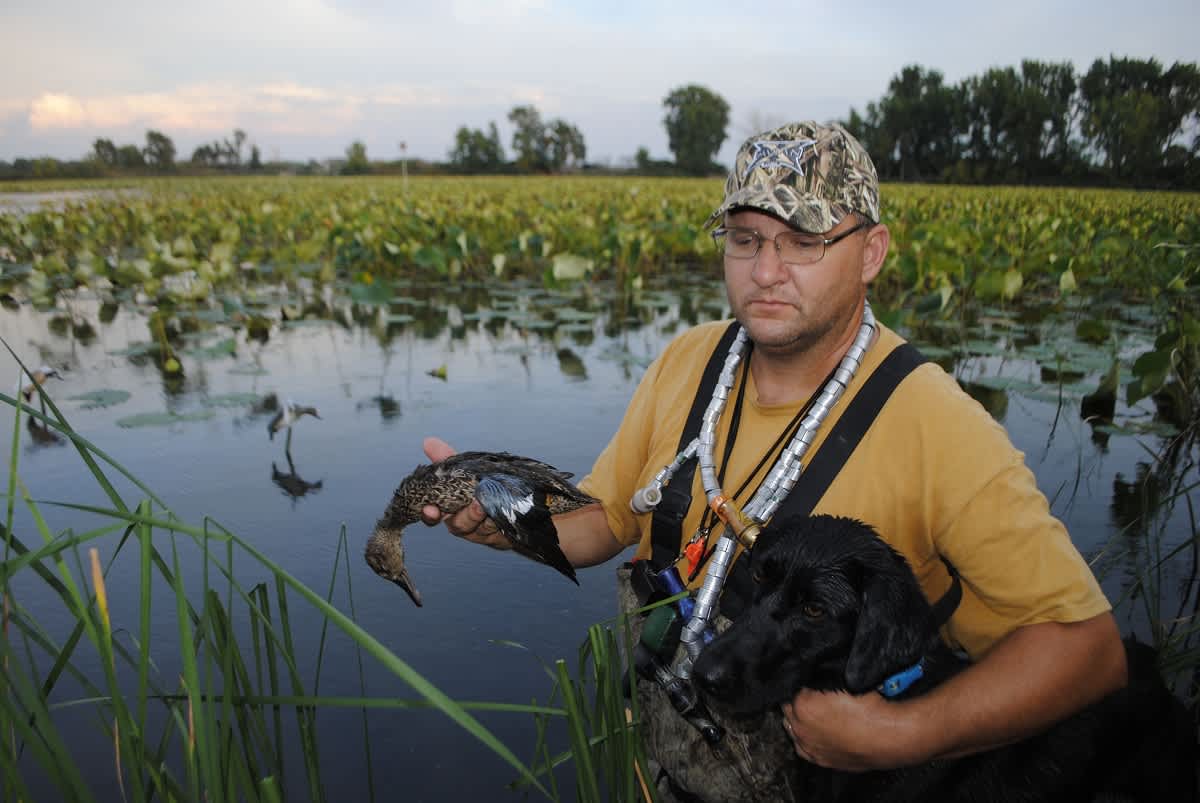Michigan’s First Teal Season in 50 Years a Success
Bob Gwizdz 09.15.14

For the first time in 50 years, Michigan duck hunters had an opportunity to start duck hunting well in advance of the usual opener this fall. Michigan duck hunters enjoyed an early teal season the first week of the season and by all accounts, the experiment was a success.
Early teal seasons have been a longstanding tradition across much of America, but the special hunt was canceled in the Upper Midwestern states—known in federal waterfowl parlance as “production states”—five decades ago. Lobbying by Southern states, which were concerned about the incidental mortality to non-target species in northern climes, led the US Fish and Wildlife Service to disallow the early teal season in the north.
The prohibition against early teal hunting in productions state was probably unnecessary as virtually all states boast some duck production. There are plenty of wood ducks (perhaps the ducks most easily mistaken for teal) across the South. And both Texas and Louisiana—whose hunters enjoy early teal seasons—produce mottled ducks as well.

The feds finally relented after years of petitioning for the early season and allowed Michigan to set an experimental teal season with a proviso: the Department of Natural Resources (DNR) would have to maintain “spy blinds” during the season to watch how the state’s duck hunters comported themselves.
“They behaved themselves,” said Dave Luukkonen, a DNR research biologist who manned a spy blind in the eastern Upper Peninsula. “If anything, it looks like people are being very conservative; we saw some hunters with teal in front of them who were not shooting. So far, it looks like people are taking it seriously.”
Luukkonen said he watched several parties of hunters “just watching the mallards and wood ducks.”
Early teal season is designed to take advantage of blue-winged teal, which are among the earliest of migrating waterfowl. Peak abundance of blue-winged teal in Michigan typically occurs in the last week of August and the first week of September, so Michigan’s week-long season seemed perfectly timed to intercept the early migrants.
I managed to get out twice during the early teal season. On opening day (September 1), I shared a boat with Joe Robison, a Southeastern Michigan DNR biologist and avid waterfowl hunter, on a public land marsh just off of Lake Erie.
We saw just two teal (though there were plenty of mallards and wood ducks in the air) and Robison killed both of them, a blue-wing and a green-wing. We heard some shooting from a nearby private clubs and just after shooting time, a big flock (maybe 20 birds) came in as we were picking up decoys. When Robinson contacted a member at one of the clubs, he reported club members killing 22 teal: 21 green-wings and one blue-wing.
A couple of days later, Robison hunted with a couple of guys on private property and the trio killed an 18-bird limit, he said: 14 blue-wings and four green-wings.
I went back several days later to hunt with Robinson again; we went to the same marsh but couldn’t get the boat where we wanted to go because of shallow water. There were a lot of teal in the air, but they didn’t want to work our decoys. Again, Robinson knocked down the two teal that came close enough to give us a chance (both blue-wings). The birds wanted in elsewhere. Robinson checked a hunter who was on the opposite side of the marsh and he’d killed five teal by the time we left.

Results from around the state were mixed. Fish Point State Wildlife Area on Saginaw Bay reported that there were about 20 birds shot on the area during the teal season, but none of the crop fields were flooded so hunters had just a couple of ponds to work with. Some birds were shot on the Bay, too.
Robison—who runs Pointe Mouillee State Game Area as well as supervising the other managed waterfowl areas in southern Michigan—said there was heavy traffic at Pointe Mouillee. Area staff counted 50 vehicles parked around the area on opening day.
“Some guys shot teal and some didn’t, but we had a good number of teal around,” Robison said. “The guys who knew how to scout and set up for them did well. I saw one guy who had a blue-wing that was banded in Saskatchewan, so the teal were obviously migrating through.
“The biggest mistake people make when they’re teal hunting is they think they’re going to shoot teal in the same places they shoot mallards and wood ducks the rest of the year,” he said. “Teal are in shallow water and on the mud flats.”
Think shore birds, not diving ducks. If you have more than two feet of anchor line on your teal decoys, you have more than you need.
Michigan will enjoy the experimental teal season for two more years. If the spy blinds indicate minimal targeting of other species, the season will become operational and we’ll have it from now on. Personally, I’ll be glad to see it; I enjoyed early teal season immensely when I lived in the South. There’s no reason not to enjoy it here in Michigan, too.
For more information on Michigan hunting go to michigan.org. Click here to purchase a Michigan hunting license online.
This article was produced in partnership with Pure Michigan.

